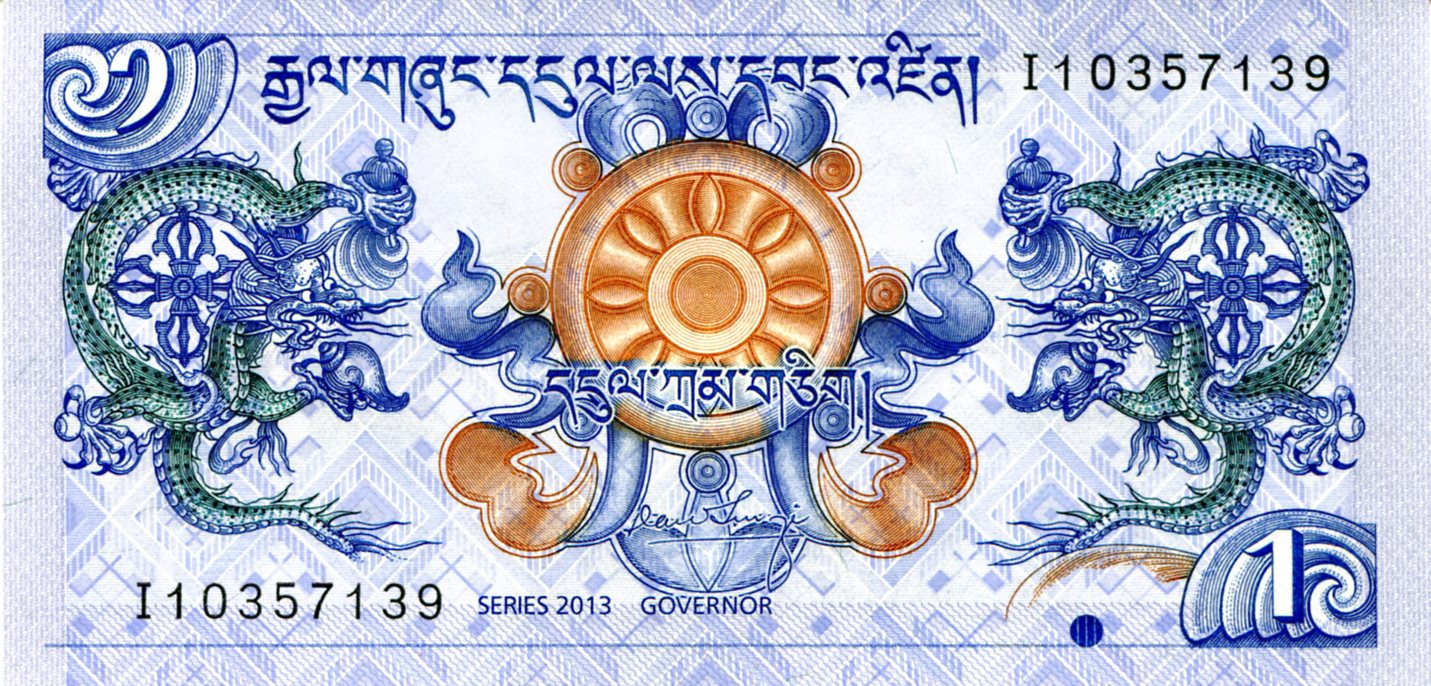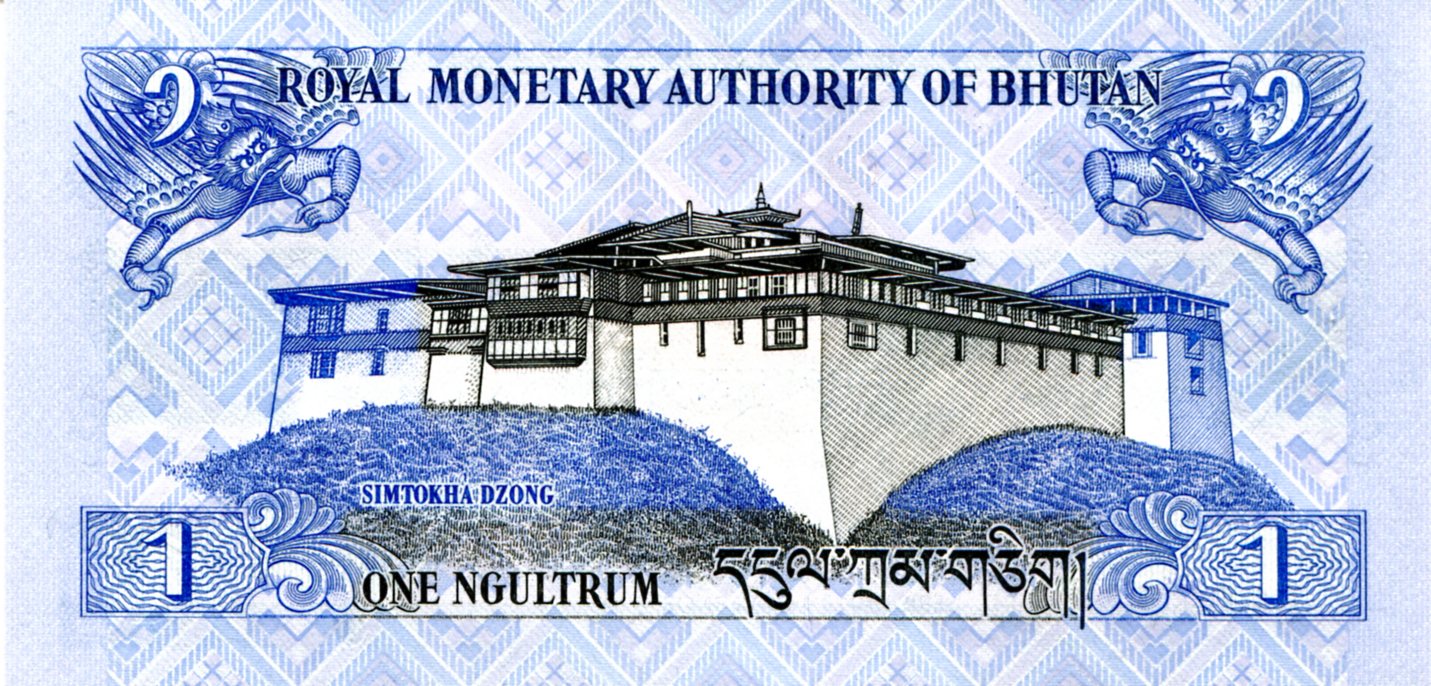This colorful banknote is a 1 ngultrum note issued by the Royal Monetary Authority of Bhutan, Series 2013.
If I ever knew it, and maybe I did, I’d forgotten that the ngultrum — དངུལ་ཀྲམ — is the basic currency of that insular Himalayan state. It divides into 100 chhertum. The ngultrum is pegged at par to the Indian rupee, so these days my note is theoretically worth about 1.5 U.S. cents.
That’s Simtokha Dzong. Wiki tells us that “Simtokha Dzong (‘dzong’ means ‘castle-monastery’), also known as Sangak Zabdhon Phodrang (‘Palace of the Profound Meaning of Secret Mantras’), is a small dzong. It was built in 1629 by Zhabdrung Ngawang Namgyal, who unified Bhutan… An important historical monument and former Buddhist monastery, today it houses one of the premier Dzongkha language learning institutes.”
I didn’t pick up the note in Bhutan. Mostly what I remember hearing about visiting Bhutan in the 1990s was that visas were inordinately expensive. These days, I’ve read, the approach is to require foreigners to spend a certain per diem in country — high for the developing world — and hew pretty closely to their organized tours. Nepal, it ain’t.

